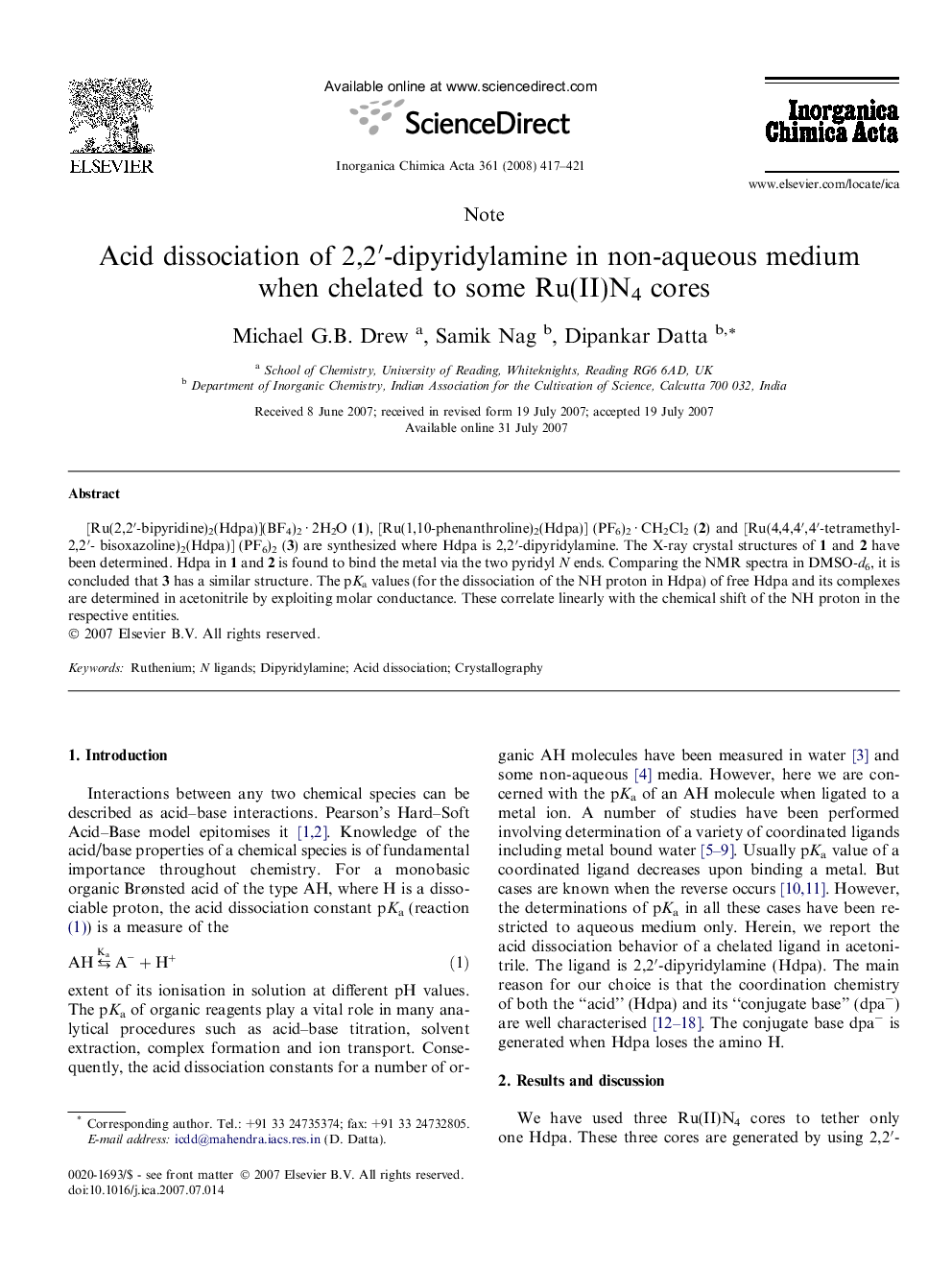| Article ID | Journal | Published Year | Pages | File Type |
|---|---|---|---|---|
| 1307613 | Inorganica Chimica Acta | 2008 | 5 Pages |
[Ru(2,2′-bipyridine)2(Hdpa)](BF4)2 · 2H2O (1), [Ru(1,10-phenanthroline)2(Hdpa)] (PF6)2 · CH2Cl2 (2) and [Ru(4,4,4′,4′-tetramethyl-2,2′- bisoxazoline)2(Hdpa)] (PF6)2 (3) are synthesized where Hdpa is 2,2′-dipyridylamine. The X-ray crystal structures of 1 and 2 have been determined. Hdpa in 1 and 2 is found to bind the metal via the two pyridyl N ends. Comparing the NMR spectra in DMSO-d6, it is concluded that 3 has a similar structure. The pKa values (for the dissociation of the NH proton in Hdpa) of free Hdpa and its complexes are determined in acetonitrile by exploiting molar conductance. These correlate linearly with the chemical shift of the NH proton in the respective entities.
Graphical abstractThe pKa values of 2,2′-dipyridylamine, for the dissociation of the NH proton, in free state and when bound to three different Ru(II)N4 cores are determined in acetonitrile from molar conductance measurements. They are found to correlate linearly with the corresponding chemical shifts of the NH proton in DMSO-d6.Figure optionsDownload full-size imageDownload as PowerPoint slide
